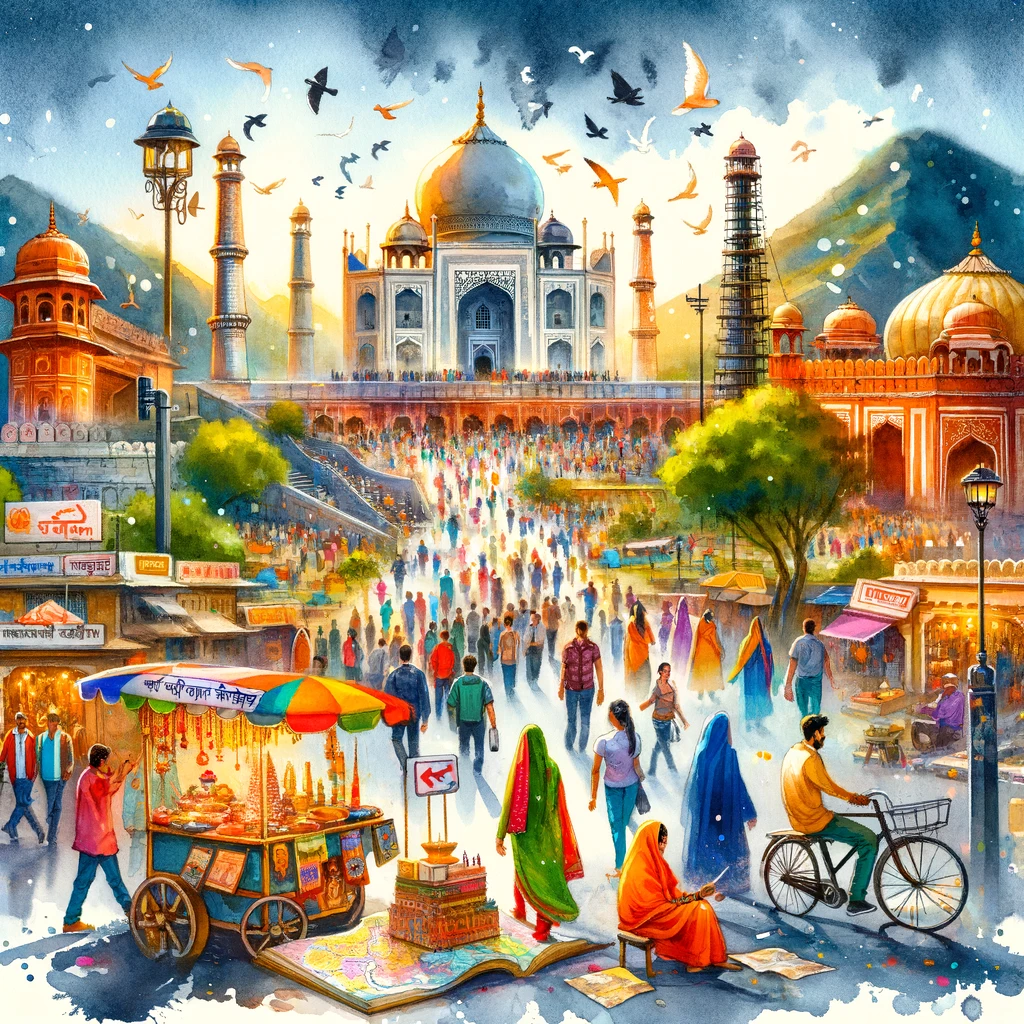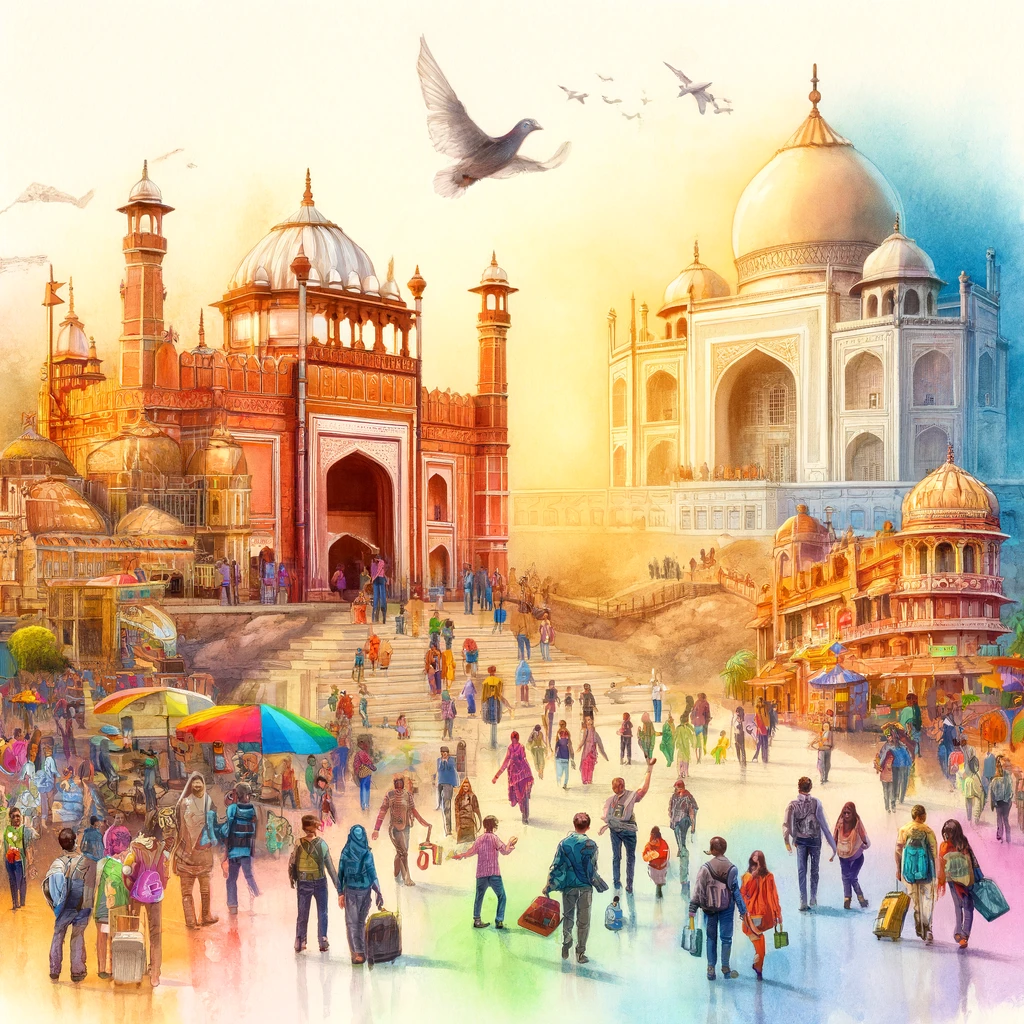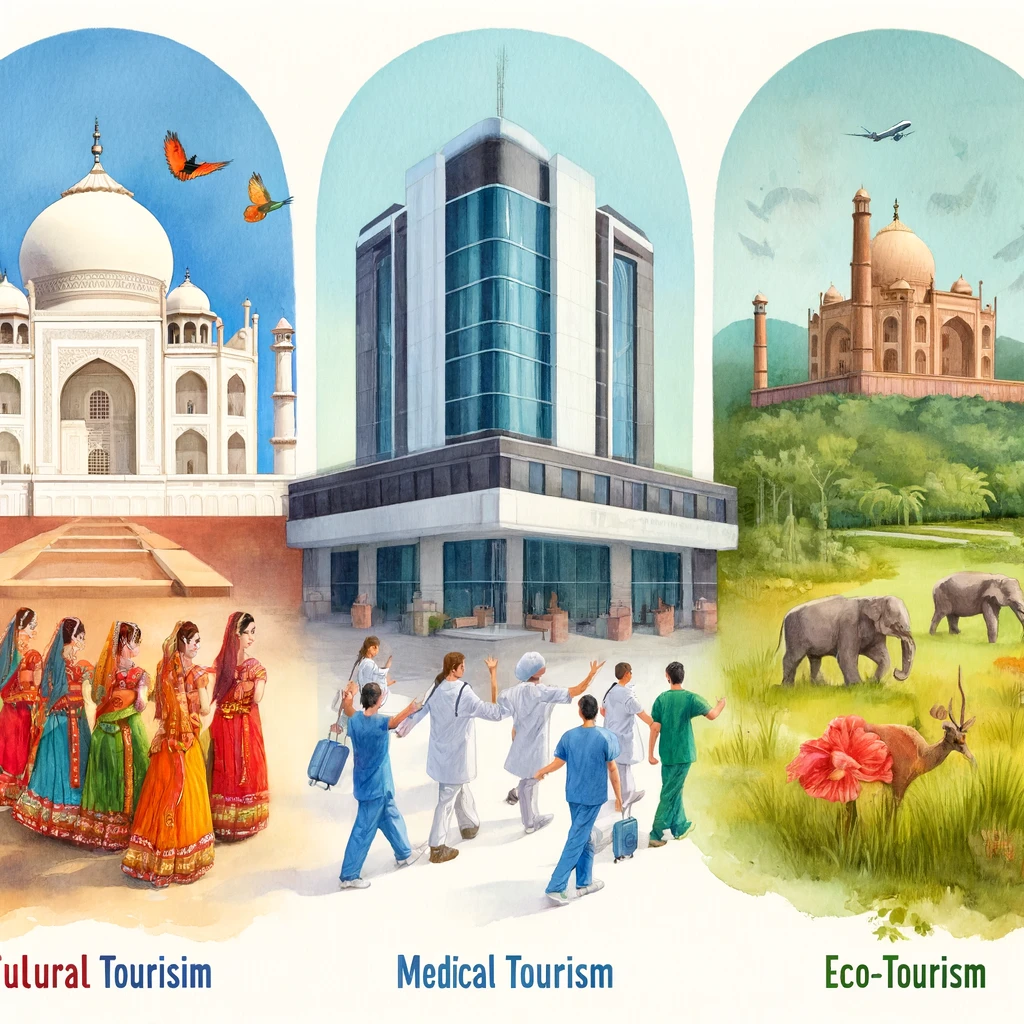
1. Overview of the Tourism Industry in India
The tourism industry in India is a significant contributor to the nation’s economy, renowned for its rich cultural heritage, diverse landscapes, and historical landmarks. Tourism in India encompasses a wide range of experiences, from the snowy peaks of the Himalayas to the tropical beaches of Kerala, and from the spiritual ambiance of Varanasi to the architectural wonders of Rajasthan. The sector not only promotes cultural exchange and international goodwill but also plays a vital role in economic growth and employment generation.
2. Major Tourist Destinations and Types of Tourism
Major Tourist Destinations
- The Golden Triangle: Delhi, Agra, and Jaipur are part of this popular tourist circuit, showcasing India’s historical and architectural splendor, including the Taj Mahal.
- Goa: Known for its pristine beaches, vibrant nightlife, and Portuguese heritage.
- Kerala: Famous for its backwaters, Ayurvedic treatments, and lush landscapes.
- Rajasthan: Home to majestic forts, palaces, and desert landscapes, including cities like Jaipur, Udaipur, and Jaisalmer.
- Himachal Pradesh and Uttarakhand: Renowned for their scenic hill stations, trekking trails, and adventure sports.
- Tamil Nadu: Rich in Dravidian architecture, temples, and cultural heritage.

Types of Tourism
- Cultural Tourism: Involves exploring India’s rich cultural heritage, including its festivals, art forms, and historical sites.
- Medical Tourism: Attracts international tourists seeking affordable and high-quality medical treatments and wellness therapies.
- Eco-Tourism: Focuses on sustainable travel to natural areas, promoting conservation and benefiting local communities.
- Adventure Tourism: Includes activities like trekking, river rafting, paragliding, and mountaineering in the Himalayas and other regions.
- Spiritual Tourism: Centers around pilgrimages to holy sites like Varanasi, Rishikesh, Tirupati, and Bodh Gaya.
3. Economic Impact of Tourism
Tourism significantly contributes to India’s economy through:
- GDP Contribution: The tourism sector contributed about 9.2% to India’s GDP in 2018.
- Employment Generation: The industry supports approximately 42.673 million jobs, accounting for 8.1% of total employment in India.
- Foreign Exchange Earnings: Tourism is a major source of foreign exchange, with earnings reaching $28.9 billion in 2019.
- Regional Development: Tourism stimulates regional development by promoting infrastructure, enhancing connectivity, and providing livelihood opportunities to local communities.

4. Key Challenges
Infrastructure
- Transport: Inadequate connectivity, poor road conditions, and limited access to remote tourist destinations hinder the growth of tourism.
- Accommodation: Shortage of quality accommodation facilities, especially in smaller towns and rural areas, affects tourist experiences.
Safety
- Crime: Safety concerns, including crimes against tourists, can deter potential visitors.
- Health and Hygiene: Inadequate healthcare facilities and poor sanitation in tourist areas can be a deterrent.
Sustainability
- Environmental Impact: Over-tourism in popular destinations leads to environmental degradation, pollution, and loss of biodiversity.
- Cultural Sensitivity: The commercialization of cultural sites can erode the authenticity and integrity of local traditions.
5. Government Initiatives and Future Prospects
Government Initiatives
- Incredible India Campaign: Aimed at promoting India as a premier tourist destination through marketing and promotional activities.
- Swadesh Darshan Scheme: Focuses on the integrated development of theme-based tourist circuits to provide a unique experience.
- Prasad Scheme: Aims at developing pilgrimage and heritage destinations to enhance religious tourism.
- E-Visa Facility: Simplifies the visa process for international tourists, covering over 160 countries.
- Adopt a Heritage Project: Encourages public-private partnerships for the maintenance and development of heritage sites.
Future Prospects
The future of the tourism industry in India looks promising, with potential growth driven by:
- Digital Transformation: Leveraging technology to enhance tourist experiences through virtual tours, online bookings, and digital marketing.
- Infrastructure Development: Ongoing investments in improving transportation, accommodation, and tourist amenities.
- Sustainable Tourism Practices: Promoting eco-friendly tourism practices to preserve natural and cultural heritage.
- Niche Tourism: Developing niche tourism products like rural tourism, wildlife tourism, and culinary tourism to attract diverse traveler segments.
Conclusion
The tourism industry in India holds immense potential, contributing significantly to economic growth, employment, and cultural exchange. However, addressing challenges related to infrastructure, safety, and sustainability is crucial for the sector’s continued success. With strategic government initiatives and a focus on sustainable practices, India can further enhance its appeal as a top global tourist destination, ensuring long-term benefits for both the economy and local communities.


